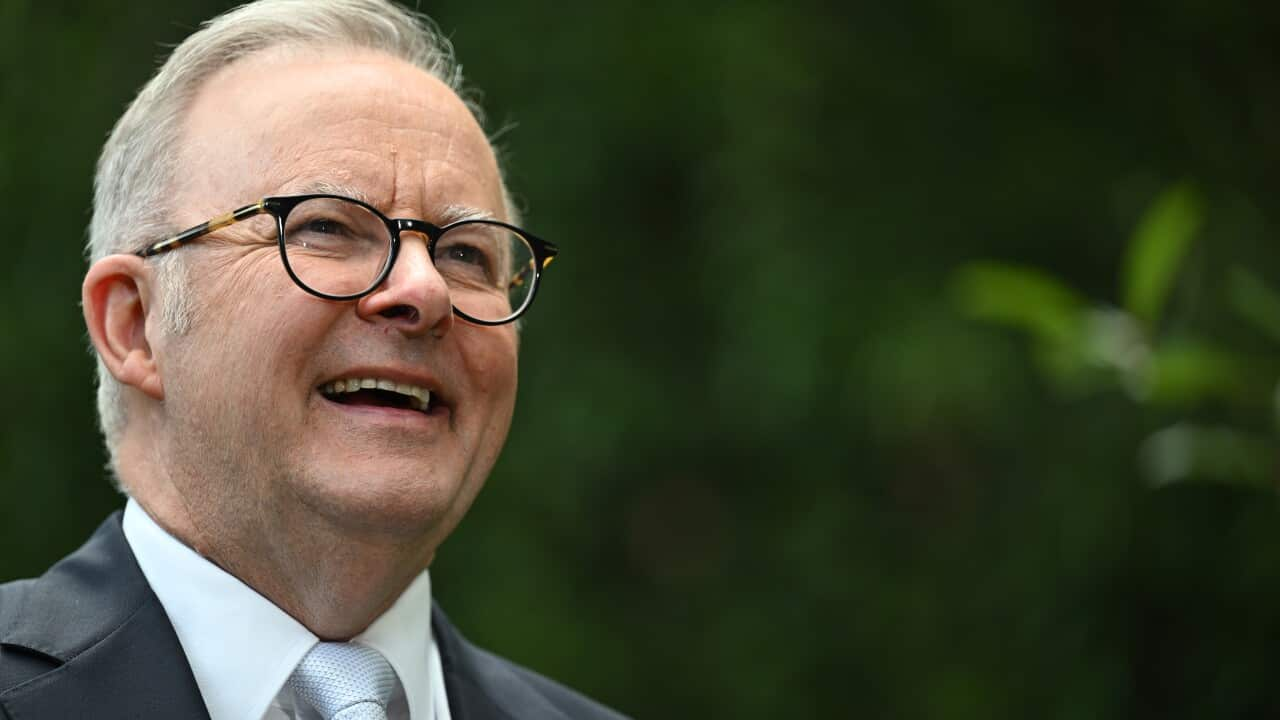It's Australia's oldest political party and is currently in power in Australia.
But where did the Labor Party come from and what does it represent now?
Ahead, your guide to the party ahead of the 2025 election.
Australia's oldest political party
The Australian Labor Party — or ALP — is Australia's oldest political party.
The ALP is synonymous with Australia's labour and union movement, being born from the "great shearer strikes in western Queensland in the 1890s", according to Wayne Swan, former treasurer and the party's current national president.
Back then, working conditions were tough, so trade unions, which are organised groups of workers, were formed.
They wanted their demands taken seriously by the government, so they formed the Labor Party in 1901.
At the start, Labor's policies were focused on workers' rights. It campaigned for the eight-hour working day and created the minimum working wage.
In its early days, it was a strong advocate for the ‘White Australia Policy’ and was largely against immigration.
But these days, the party's priorities have shifted.
What does the ALP look like now?
Labor fills the space of the more progressive party out of the two main contenders, and is considered centre left.
Senior lecturer at the Australian National University's School of Politics and International Relations, Jill Sheppard, says the party is rooted in unions.
"Sometimes, when we think we'd expect Labor to be a bit more progressive on some issues, or maybe a bit more pro-immigration, we can sometimes explain that by drawing on their history of being really trade union representatives," she tells SBS News.
The Labor Party says it also represents the working class and workers' rights in Australia, rooted in strong union ties.
"We are a party that is proudly of the union movement and associated with the union, so the union movement is a participant in our party," Swan told SBS News. "Not all union members are members of the Labor Party, but many are.
"The ethos of unionism, the solidarity that comes from it, looking after your mate, if you like, always been having an eye out for those that are more vulnerable, and lending them a helping hand lies at the very core of unionism, but also at the very core ethos of the Labor Party."
At its core, the Labor Party believes the government has a role in "spreading" opportunity, according to Swan.
He says it's what you'd call a party of big government.
"We fundamentally believe that government has got a role to play in creating prosperity and then spreading the opportunity," he said.
"So we see a significant role for government intervention in the economy, in clear contrast to the number of conservative parties over the past 100 years that have argued for essentially a survival of the fittest mentality on their side of politics, small government, regressive tax, a very sparse social safety net."
What have been the Labor Party's biggest achievements?
Sheppard says over the last 15 years, the party would be proud of its social achievements.
"We might look at things like the apology to the Stolen Generations, we might look at constant minimum wage increases, things that don't always sound very exciting, but they are the important business of governing the country, making sure that there is a safety net for the worst off Australians," she said.
Some of its biggest achievements include:
- Introducing universal healthcare in 1974 (first known as Medibank, now Medicare)
- The Native Title Act of 1993
- Setting up the National Disability Insurance Scheme, the NDIS, in 2013
Which well-known leaders have been part of the ALP?
Two key Labor figures were Gough Whitlam, its longest-serving leader, and Bob Hawke, its longest-serving prime minister.
Whitlam led a reformist government that ended military conscription, established universal healthcare and introduced free university education, among other measures.
He was controversially dismissed by then governor-general Sir John Kerr in 1975.
The Hawke government's measures included floating the dollar, deregulating the banking industry and confirming Australia's national colours as green and gold.
Hawke was also renowned for the speed at which he could skol a beer.
Kevin Rudd — who was pushed out by Australia's first and only female PM Julia Gillard — both belong to the ALP.
The leader of the party, and Australia at the moment, is Anthony Albanese. If Labor wins the next election, he'll be prime minister again.
He's been a federal politician for almost 30 years, elected to the inner west Sydney seat of Grayndler.
He has spoken about how he grew up in public housing with a single mother.
When taking office, he said his government's areas of focus would be the cost of living, bolstering Indigenous rights, and tougher climate action.
What's ahead for the Labor Party this upcoming election?
As we head into the election, Swan says it's not going to be easy for Labor.
"There's a myriad of challenges," Swan said. "There's been no government in the last couple of years that's been re-elected internationally in this cost of living crisis, which is largely internationally induced. So it's a tough environment to go to the people."
This election, Labor's policies include:
- Cutting student debt
- Making childcare cheaper
- Improving Medicare
- Investing in renewable energy
So how does the party stack up to its original manifesto? Sheppard says there's been a lot of change.
"The Labor Party of today is obviously very different to 150 years ago," she said. "What that means for them now is that they are expected to both represent workers and represent people who want, you know, a progressive, sort of socially liberal, multicultural Australia."





